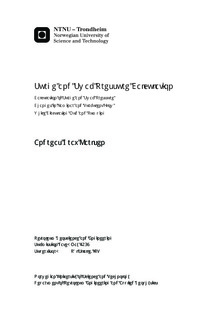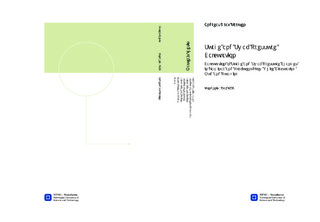| dc.contributor.advisor | Skalle, Pål | nb_NO |
| dc.contributor.author | Karlsen, Andreas Grav | nb_NO |
| dc.date.accessioned | 2014-12-19T12:18:07Z | |
| dc.date.available | 2014-12-19T12:18:07Z | |
| dc.date.created | 2014-08-06 | nb_NO |
| dc.date.issued | 2014 | nb_NO |
| dc.identifier | 736504 | nb_NO |
| dc.identifier | ntnudaim:11321 | nb_NO |
| dc.identifier.uri | http://hdl.handle.net/11250/240331 | |
| dc.description.abstract | Pressure changes due to Surge and Swabs has in many years been a big concern in the industry. If the pressure changes become too high, the formation can fracture, and formation influx can lead to a kick. In worst case scenarios this kick can lead on to blow out and put human life in danger. This thesis focuses the fundamental theory and on a program that can calculate the pressure changes in turbulent and laminar flow conditions for non-Newtonian fluids. The program lets you choose what sections of the well you are interested in, as well as calculations regarding ECD. In this master thesis a program calculating Surge and Swab pressures in laminar and turbulent flow has been developed. The laminar pressures are calculated from an equation that is developed based on Brooks(1980), and the turbulent flow equation is based on the work of Saasen (2012). The results in this thesis are based a sensitivity analysis of the laminar- and turbulent flow equation derived in this thesis. The results give realistic pressure changes and are a good indicator for what it to expect. Unfortunately was not real drilling data provided to compare the program with real drilling data results. This study show that handling of the different parameters is important. The speed when running or pulling out of hole is important to control, since the pressure change increases rapidly as the velocity increases. Handling of the wellbore geometry is also an important factor to control. If the flow area increases, the pressure change gets higher. In laminar flow the pressure change also depends on the Flow behavior index n, and the Power Law Constant K. It is observed that when the Flow behavior index drops below 0,5 the pressure change increases rapidly. Pressure change also increases with a decreasing Power Law constant K. For the turbulent flow it is observed that the pressure increases exponentially with the velocity. This underlines the importance of managing the velocity during running- or tripping operations. Length of the section changes the pressures linearly. For future work it is important to test the models up more towards real time drilling data from the industry. It has been a difficult task to access drilling data, since most drilling reports are confidential. | nb_NO |
| dc.language | eng | nb_NO |
| dc.publisher | Institutt for petroleumsteknologi og anvendt geofysikk | nb_NO |
| dc.title | Surge and Swab Pressure Calculation: Calculation of Surge and Swab Pressure Changes in Laminar and Turbulent Flow While Circulating Mud and Pumping | nb_NO |
| dc.type | Master thesis | nb_NO |
| dc.source.pagenumber | 78 | nb_NO |
| dc.contributor.department | Norges teknisk-naturvitenskapelige universitet, Fakultet for ingeniørvitenskap og teknologi, Institutt for petroleumsteknologi og anvendt geofysikk | nb_NO |

